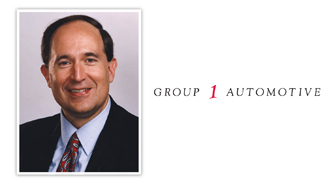Group 1 Notches 49% Income Gain, Offers Supply Update

Group 1 Automotive enjoyed more than a 48-percent increase in its adjusted net income during the first quarter, and officials seemed relatively optimistic about the dealer group’s ability to weather potentially significant disruptions in the supply chain stemming from the Japanese disaster’s aftermath.
Announcing its first-quarter earnings on Tuesday, Group 1 said its adjusted net income came in at $15.5 million, a 48.5-percent hike from the year-ago period.
GAAP first-quarter net income came in at $15.4 million. This includes $100,000 of net after-tax adjustments and compares to a sum of $8 million in the first quarter of 2010.
The auto group’s earnings came on quarterly revenues of $1.4 billion, an 18.3-percent year-over-year spike officials attributed largely to the significant spike in new-vehicle sales.
Specifically, new-vehicle unit sales jumped 19.7 percent with revenues increasing 21.5 percent. Meanwhile, used revenue (including wholesale and retail) spiked 19.6 percent, and unit sales were up 18.8 percent.
Group 1 saw a 5.1-percent uptick in parts and service revenue and an 18-percent increase in F&I revenue.
Looking at some other metrics highlighted by Group 1, its retail new-vehicle gross profit was up 8.6 percent and its retail used gross profit climbed 9.3 percent.
There was a 70-basis-point sequential increase in retail used gross margin, which came in at 8.9 percent. Group 1 also noted that its F&I gross profit per retail unit was $1,068, which marked a $16 uptick.
Moreover, Group 1’s SG&A expense as percent of revenue was 12.5 percent, an improvement of 150 basis points, officials indicated.
“These results demonstrate our continuing focus on growing top-line revenues in all business segments while leveraging our improved cost structure,” said Group 1 president and chief executive officer Earl Hesterberg.
Japanese Disaster’s Impact
Moving along, Hesterberg also touched on what impact the auto group will see from the supply shortages stemming from the earthquake and tsunami in Japan last month.
The CEO expects the company will soon experience near-term challenges with regards to new-vehicle deliveries, but stressed that the exact effect on production isn’t quite clear yet.
Group 1 — which had more than 61 percent of its first-quarter new-vehicle unit sales comprised by Toyota, Honda and Nissan brands — said that as of March 31, it had 50 days’ supply of Japanese units in its inventory and stressed that it is fully capable of adjusting to a low-inventory environment.
“Although the manufacturers are working diligently to assess the situation, it is still too early to determine the severity or length of the production disruptions,” Hesterberg explained. “We do know that the major issues relate to Japanese brands, and there is a probability of a 30-percent to 50-percent reduction of deliveries of some Japanese models this summer.
“Group 1 had adequate new vehicle inventory as of March 31, with 51 days of total supply on hand and 50 days’ supply of our Japanese brands. If deliveries are reduced to the extent mentioned above, it is likely that inventory levels will constrain sales for the second quarter and possibly third quarter,” he continued.
“Fortunately, we know how to manage the business in a low-inventory environment, particularly with the import brands, as those inventories have historically been in very short supply from time to time during the last 10 years,” Hesterberg added. “For stores that could be impacted by limited new vehicle inventory, we are adjusting advertising and other expenses, and expect to achieve higher new-vehicle gross margins in the coming months.”
Moving along, Hesterberg also touched on the impact, or lack, thereof, on the parts and service sector at Group 1. While nothing has been spotted yet,
Hesterberg said Group 1 will keep a close watch on this segment.
“Although there have been a few replacement parts where orders are being filled on a ‘need’ basis, there has not been an impact on our parts and service business,” he shared. “During the coming months, we will continue to monitor the situation and will shift more of our focus to our higher-margin used-vehicle and parts-and-service businesses, which account for more than 65 percent of our total gross profit.”

 View The Latest Edition
View The Latest Edition

